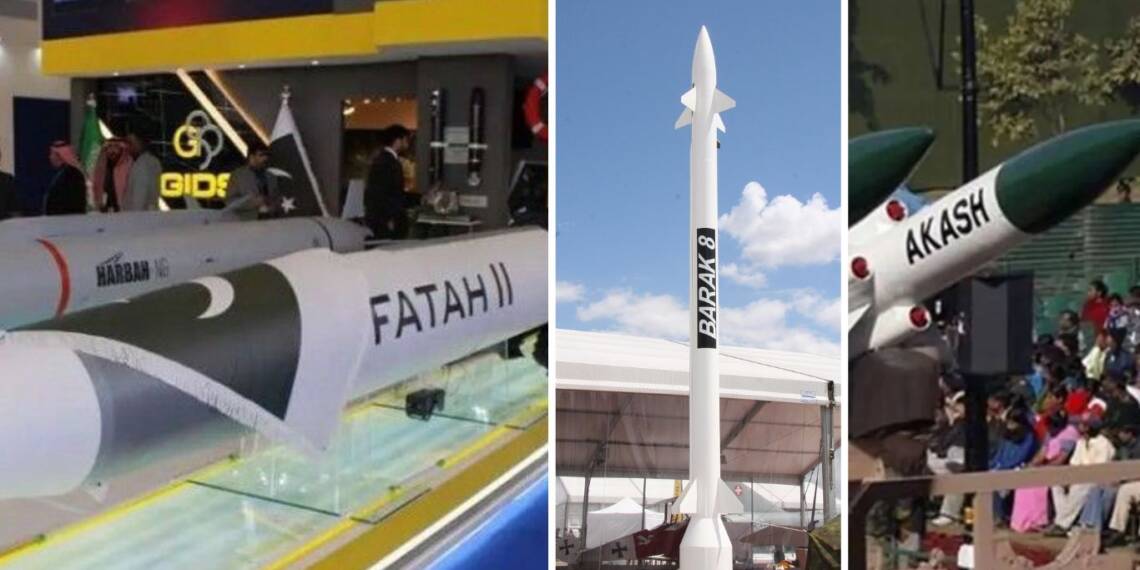In the wake of the barbaric terror attack in Pahalgam on April 22, which claimed the lives of 26 innocent civilians, India launched a resolute military response through Operation Sindoor. This precise and calculated offensive targeted terror infrastructure deep within Pakistan and Pakistan-occupied Kashmir (PoK), reaffirming India’s unambiguous stance against terrorism emanating from across the border.
In an alarming countermeasure, Pakistan retaliated with an extensive strike termed Operation Bunyan al-Marsoos — an Arabic phrase meaning Solid Wall of Lead. The operation featured a dangerous deployment of drones and short-range ballistic missiles, most notably the Fateh-II, which represents a growing trend in Islamabad’s reliance on tactical missile systems to offset conventional asymmetry.
What transpired next underscored the fragility of strategic stability in South Asia. Pakistan reportedly attempted a ballistic missile strike aimed at India’s national capital, Delhi. However, the attack was effectively intercepted by India’s sophisticated air defence architecture, possibly by indigenous Akash or Israeli Air Defence BARAK-8, near Sirsa in Haryana, preventing a potential catastrophe. The incident marks one of the most intense military exchanges between the nuclear-armed neighbours in recent history.
Fateh-II
The Fateh-II missile is a recent addition to Pakistan’s arsenal of tactical ballistic weapons. First test-fired by the Pakistan Army in December 2021, it is a successor to the earlier Fateh-I, and forms part of the broader series aimed at enhancing battlefield precision and deterrence flexibility. With a range from 250 to 400 kilometres, the Fateh-II enables deep targeting within Indian territory, threatening civilian infrastructure across northern and western India.
Its guidance system reportedly includes advanced satellite navigation and inertial avionics, allowing for a Circular Error Probability (CEP) of under 10 meters — an indicator of high targeting accuracy. The missile’s trajectory is relatively straight and low altitude, engineered to evade conventional radar detection. Moreover, its launch platform is road-mobile, offering Pakistan rapid deployment capabilities in a battlefield scenario. While Pakistan claims the missile is conventionally armed, there remains strategic ambiguity over its potential to carry nuclear payloads.
These characteristics position the Fateh-II as an instrument of tactical coercion rather than strategic stability. It is designed to neutralize high-value targets such as command centers, logistics hubs, and radar installations. Its deployment, especially in a retaliatory context, signals a dangerous shift in Pakistan’s doctrine — away from restrained deterrence toward an aggressive posture under the banner of “Full Spectrum Deterrence.” However, India’s supremacy in Air Defence equipment, developed indigenously and imported from Russia and Israel, keeps these strong threats from Pakistan.
Crisis Dynamics: India’s Strategic Clarity vs. Pakistan’s Recklessness
India’s Operation Sindoor was a focused and legitimate counter-terror operation aimed at dismantling active terror training facilities in hostile territory. This action was grounded in the principle of self-defense and executed with surgical precision, reflecting both strategic resolve and operational competence. In contrast, Pakistan’s Operation Bunyan al-Marsoos revealed a tendency to escalate conflict asymmetrically by employing risky and destabilizing technologies. They have not only targeted Military and Civilian infrastructure but also used short-range ballistic missiles. It has been put high on the escalation ladder.
The fact that Pakistan opted to include the Fateh-II missile in its retaliatory arsenal indicates a growing dependency on tactical ballistic systems to compensate for its conventional inferiority. The attempted strike on the Indian capital, although thwarted, speaks volumes about Pakistan’s increasingly provocative and irresponsible military behaviour. Such actions not only undermine regional stability but also risk inviting disproportionate retaliation, further eroding any space for strategic restraint. Indian military equipment is more robust and technologically advanced than Pakistan’s, and if India retaliates with this, it will have long-term repercussions on Pakistan.
Conclusion
The recent confrontation following the Pahalgam attacks has brought South Asia once again to the brink of escalation. While India acted within its sovereign right to retaliate against cross-border terrorism, Pakistan’s response, centered on the use of tactical ballistic missiles like the Fateh-II, exposed its erratic and hazardous approach to conflict management. India’s steadfast response and defensive readiness underscore its commitment to security and peace, while Pakistan’s actions highlight an increasingly reckless military trajectory. The time has come to expose Pakistan to the International state. The world should take this responsibility to expose Pakistan as a state that not only harbours terrorism but also fires ballistic missiles in the security of these non-state actors.








